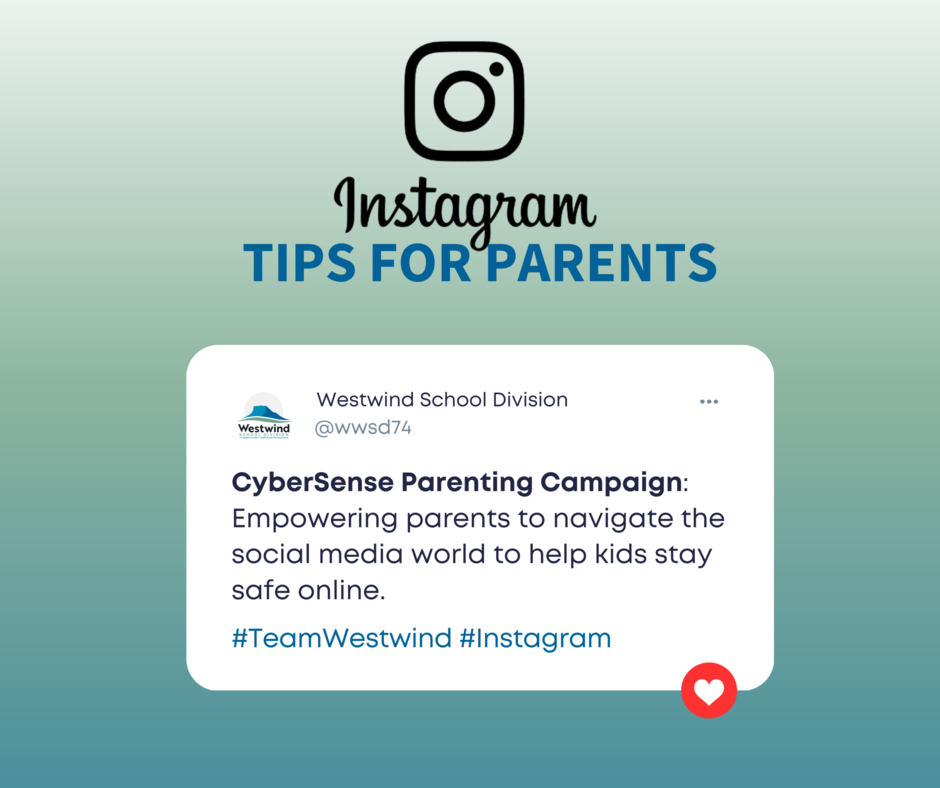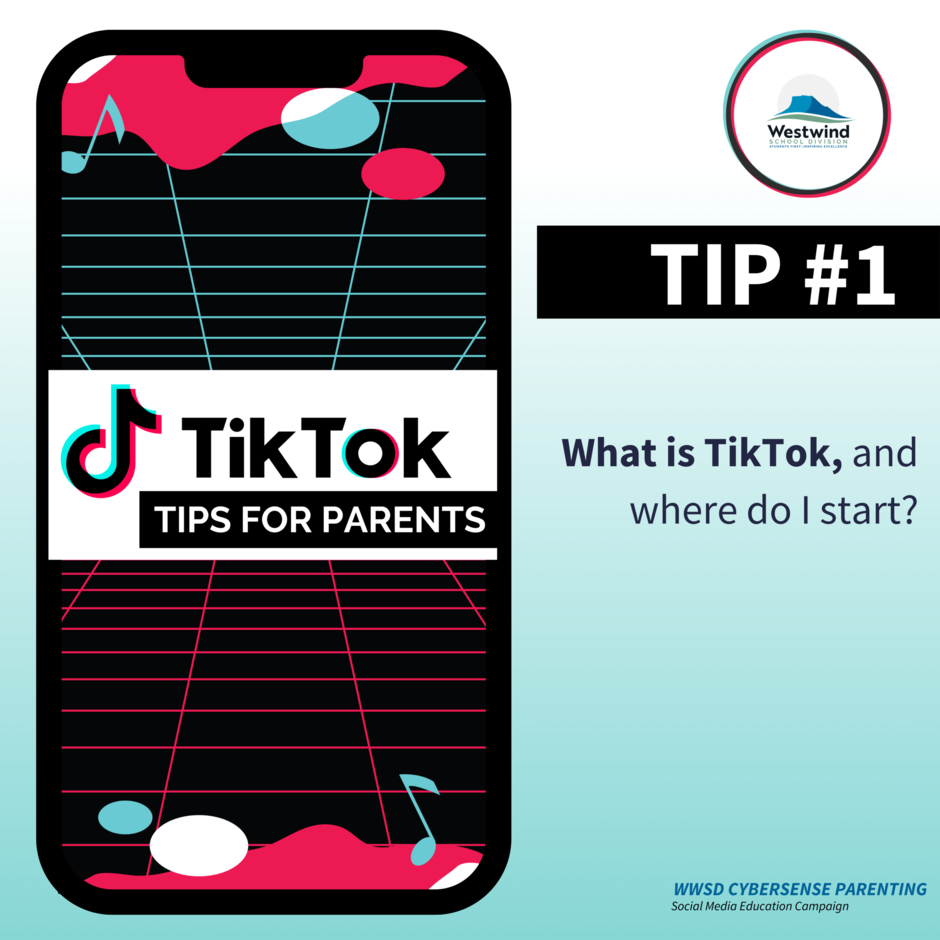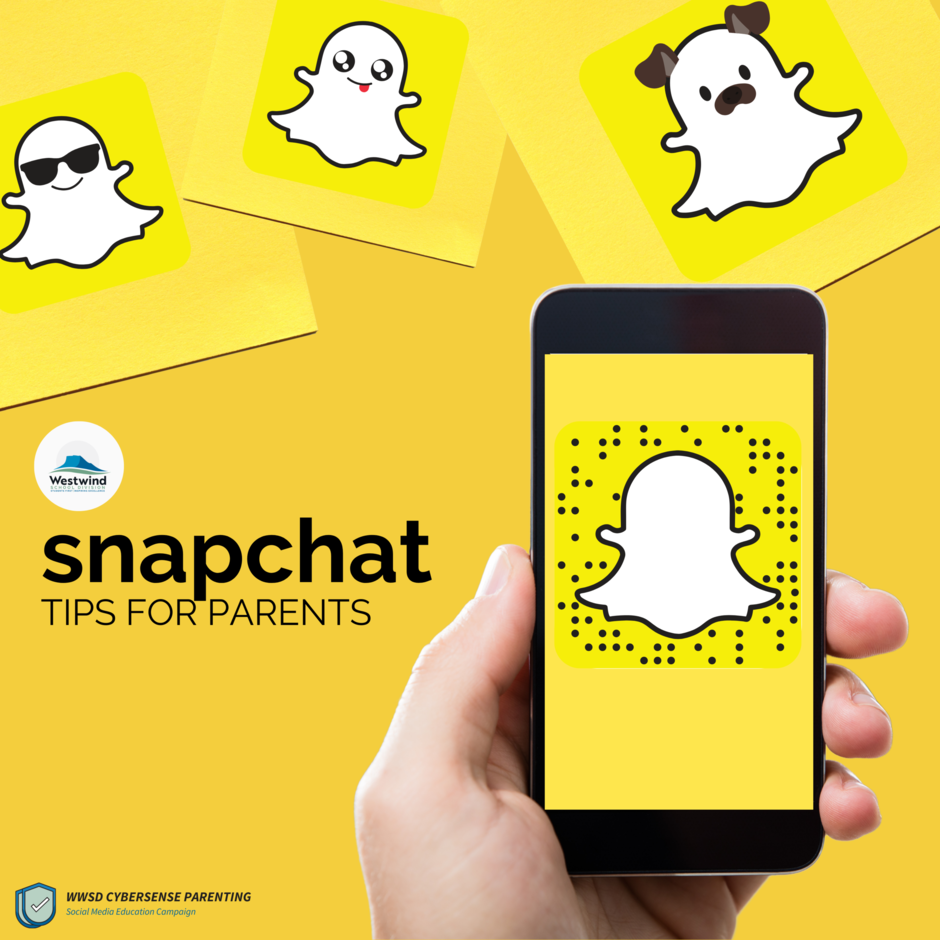
WWSD CyberSense Parenting
In today's fast-moving digital world, we know that staying on top of our children's online activities is more challenging than ever. As they explore various social media platforms, a parent's role in guiding and protecting them becomes even more crucial. We are here to help support your efforts, and that's why we're thrilled to introduce our "WWSD CyberSense Parenting" information campaign. Launching today, this initiative is designed to empower you, our parents, with the knowledge and tools necessary to navigate your children's social media world. We believe that informed parenting is not just beneficial but essential for ensuring the online safety of our children.
To support your efforts, for the next six months, we will regularly share insights about the features, potential risks, and safety measures connected to some of the most popular social media platforms your kids and their friends might be using. Every month, we'll bring you fresh, up-to-date content and resources to help you stay one step ahead.
- December & January: Instagram
- February: TikTok
- March: Snapchat
- April: VSCO/BeReal
- May: YouTube
- June: Best Practices for Parents
We recognize that the realm of social media can sometimes feel overwhelming, but together, we can help make it into a safer space for our children. We would love to hear from you and improve this campaign as we go! Please feel free to share any resources or experiences you find helpful at wsd.pr@westwind.ab.ca.

WHAT IS TIKTOK?
TikTok is a free video-sharing app available on iPhone and Android, and it's not just popular; it's a cultural phenomenon, especially among Gen Z.
free video-sharing social media platform app available on iPhone and Android, where users share videos, often featuring lip-synching to popular songs and sounds. It allows users to create, upload, and explore all kinds of content, including challenges, comedy routines, DIY tips, memes, and current events, all categorized by hashtags.
For better or worse, today's teens see TikTok as a platform for creativity, connection, and identity. Many younger generations actually use it as a search engine instead of Google!
Parents: Understanding why, how, (and if!) your teens are using TikTok is important. Initiate a conversation about their TikTok use, share your perspectives, and be curious about theirs.
Tip: Stay tuned for some of the red flags you need to be aware of over the next few days and weeks.
Resource: Everything Parents Need to Know About TikTok
IS TIKTOK SAFE FOR KIDS?
Is TikTok kid-friendly? The answer might surprise you.
TikTok claims it CAN be a kid-friendly experience with parental supervision and proper use of safety settings. But as parents, you need to know that TikTok's emphasis on popular music means many videos include swearing and sexual lyrics, so it may not be age-appropriate for kids to use on their own. Common Sense Media recommends the app for age 15+ mainly due to the privacy issues and mature content.
TikTok's has the following age-specific rules about content exposure:
- For kids under 13: Content is curated, no posting or commenting is allowed.
- Ages 13 to 15: Accounts are private by default, with limited interaction.
- Ages 16 and over: Livestreaming and direct messaging are unlocked.
Can kids bypass these restrictions?
The answer is yes, and we'll cover more in our next post.
CAN KIDS BYPASS AGE LIMITS?
In March 2023, TikTok introduced a 60-minute daily time limit for users under 18, promoting healthier screen time management. But can kids bypass TikTok's age limit and avoid the daily limit? They can, and it's easier than you think!
TikTok's age restriction is set at 13, but kids often enter a false age to gain access to the full app. This exposes them to content that may not be suitable for their age group.
Parents: it's key to keep an eye on this! Check in with your teens about their TikTok usage and the age they used to sign up. Honest conversations about online safety and responsible use are crucial in this digital era.
Resource: Parents' Ultimate Guide to TikTok
THE TIKTOK ALGORITHM
Did you know the TikTok algorithm is intentionally designed to be highly addictive? It tailors content based on user interactions, creating an endless stream of videos that seem perfectly suited to each viewer's interests. This personalization can lead to excessive screen time, especially in teens, as they get continuously fed content that keeps them engaged, and might be damaging mentally and emotionally.
One of the most dangerous aspects of TikTok is the sheer prevalence of harmful and misinformation flooding feeds, content that gives users a highly distorted view of themselves, their bodies, their mental health, and how they compare to other people.
A 2023 research study suggested that, within about two-and-a-half minutes of setting up a TikTok account, young people could be pushed self-harm content – and eating disorder content within eight.
Parents, it's vital to educate yourselves about the addictive and potentially unhealthy nature of TikTok algorithms and the importance of critical thinking and fact-checking.
Resource: How TikTok’s algorithm ‘exploits the vulnerability’ of children
TIK TOK PRIVACY
Did you know that TikTok's default privacy settings might not be enough to protect your kids? In our WWSD CyberSense Parenting campaign, we're focusing on the importance of actively managing privacy settings on TikTok.
While TikTok accounts for users under 18 are set to private by default, there's more to online safety than just account visibility. Parents, it's crucial to take extra steps to secure your child's TikTok account.
Here's how:
- Go to your child's profile, tap the three-dot icon, and navigate to "Settings and privacy."
- Under Privacy, you'll find options to make the account private and control who can comment, send direct messages, and interact with your teen's content.
Taking these steps minimizes unwanted contact from strangers and helps maintain a safer online environment for your children. Encourage open conversations about these settings and why they're important for online safety.
Resource: Parents' Ultimate Guide to TikTok
FAMILY PAIRING MODE
Did you know that you can use TikTok's Family Pairing mode to enhance your teen's online safety? Launched in 2022, this feature can help you monitor what your teen is doing on TikTok.
Family Pairing allows you to link your account with your teen, giving you control over their TikTok experience. You can set daily screen time limits, activate Restricted Mode to shield them from inappropriate content and manage their direct messaging capabilities.
Plus, you have the power to disable the search function and control the visibility of their liked videos.
Here's how to maximize TikTok's Family Pairing mode:
- In the TikTok app, tap Profile at the bottom.
- Tap the Menu ☰ button at the top.
- Tap Settings and privacy, then tap Family Pairing.
- Select the account you want to manage.
- Set screen time limits to encourage healthy usage habits.
- Activate Restricted Mode to filter out unsuitable content.
- Manage direct messaging to ensure safe online interactions.
- Disable the search function to prevent exposure to harmful content.
Resource: TikTok: Account and User Safety
TIKTOK CHALLENGES
✨While TikTok can be a platform for fun and creativity, it also hosts challenges that can be dangerous and even illegal. Some challenges promote reckless behavior like the Ghost Pepper, Pass Out, and Concussion challenges, which pose serious health risks. Others have led to tragic consequences. Additionally, there are challenges that encourage destructive behaviour or stunts in schools, leading to vandalism, theft, or other illegal activities.
It’s important to note that while there have been problematic challenges on TikTok and other platforms, most challenges are fun, light-hearted activities that people film themselves doing to connect to the broader online community.
Parents:
- Engage in open discussions with your kids about TikTok trends.
- Educate them about the consequences of participating in harmful or illegal challenges.
- Encourage them to make smart choices and understand the impact of their actions on themselves and others.
For a comprehensive guide on how to address these issues, visit Common Sense Media's guide on viral internet stunts
This resource will provide you with valuable insights and strategies to keep your kids safe.
TIKTOK PARENTAL CONTROLS
Did you know TikTok has parental controls? Many parents are unaware they can manage their children's TikTok experience directly. Our WWSD CyberSense Parenting campaign is here to guide you through it!
TikTok offers features like Screen Time Management and Restricted Mode to help parents control their kids' app usage. These settings limit time spent on the app and filter mature content, but remember, no system is foolproof. It's crucial to stay involved in your child’s digital life.
Here's how:
- On your child's TikTok, tap the three dots at the top right of their profile.
- Select "Digital Wellbeing" and enable Screen Time Management and Restricted Mode, setting a passcode to lock these options.
- To take control remotely, download TikTok on your phone, create an account, and use Family Pairing to manage settings from your device.
Resource: Parents' Ultimate Guide to TikTok
BLOCKING AND REPORTING
While TikTok has policies to block inappropriate content, teens may still encounter risky situations. They (and you!) must know how to report or block content and users that don't follow the community guidelines.
Take control by educating yourselves on TikTok's reporting and blocking features. Here's how you can keep your kids safe.
Here's how:
- Block a User: If someone's bothering your child, they can block them. This prevents the user from following, viewing, or interacting with your child's content. To block, go to the user's profile, tap the three dots, and select 'Block.'
- Report a Profile or Content: If your child sees something that violates TikTok's guidelines, they can report it. For profiles, tap the three dots on the profile and select 'Report.' For videos, press and hold the video, then tap 'Report.' Similarly, report a comment or message by long-pressing and selecting 'Report.'
Resource: TikTok's Safety Center offers comprehensive guides on how to use these features effectively
CYBERBULLYING AND TIKTOK
Did you know that cyberbullying on TikTok isn't always obvious? In our WWSD CyberSense Parenting campaign, we're exploring the subtler sides of TikTok bullying. Some users, unfortunately, misuse the 'duet' or 'reaction' feature to mock others' videos, creating side-by-side comparisons that can be hurtful.
Parents, it's essential to discuss with your kids the different forms cyberbullying can take. Encourage them to use TikTok's features responsibly and to stand up against bullying when they see it. Teach them to be upstanders, not bystanders, in the digital world.
Action Steps for Parents:
- Talk to your kids about the responsible use of TikTok's 'duet' and 'reaction' features.
- Monitor their TikTok activity and discuss the content they are viewing and creating.
- Educate them on the impact of cyberbullying and the importance of being supportive and kind online.
Resource: Common Sense Media's Guide to TikTok

What is Snapchat?
Snapchat lets users take pictures and videos, called snaps, that disappear after they're viewed. The app is free to download - all you need to sign up is your name, an email address or a phone number, and your birth date. To add friends, you can upload your contacts or search for people you know. You can also automatically add someone by taking a picture of their "Snapcode," a special QR code unique to each user.
Teens can share "snaps" or videos and images directly with another user or group or on their story (which friends can view for 24 hours) and add it to Snap Map (which shows your photo on a map of your location that anyone on Snapchat can view).
Parents: stay tuned for some of the Snapchat red flags you need to be aware of over the next few days and weeks.
Resource: Parents' Ultimate Guide to Snapchat
Where Do I Start?
One of the things that makes Snapchat popular with kids because their friends are on it and their parents aren’t.
The best way to understand Snapchat’s allure and potential risks is by diving in and experiencing it firsthand. Meet your teens where they are.
Here’s a simple guide for parents to get started with Snapchat:
- Download the App: Start by downloading Snapchat from the App Store (iOS) or Google Play Store (Android) onto your smartphone.
- Create an Account: Sign up with your email address, create a password, and follow the prompts to set up your profile.
- Explore Features: Familiarize yourself with Snapchat’s various features. Try sending snaps to friends or family members who are already on the platform.Understand
- Privacy Settings: Dive into the privacy settings to understand how to control who can see your posts and send you messages. This knowledge is crucial when guiding your teen on how to use Snapchat safely
- Engage with Your Teens: Share your Snapchat experience with your kids. Ask them to show you their favourite features and discuss how they use the app. This can be a great opportunity to talk about online safety, privacy, and digital etiquette in a relaxed and engaging way.
Action Item: Take the plunge and join Snapchat today. Not only will this help you understand why it’s so appealing to your kids, but it will also provide a platform for open discussions about responsible and safe social media use.
Snapchat Appropriate Ages
Snapchat's terms of service state that users must be at least 13 years old, aligning with online privacy laws designed to protect younger children from the risks of social media.
Parents: you need to know that Snapchat's process for verifying a user's age is NOT foolproof, which means younger children can easily access the platform without consent.
For more information on Snapchat's age requirement and tips for safe usage, check out the Snapchat Safety Center.
About Disappearing Messages
Do Snapchat messages REALLY disappear? Are they actually private?
Well, yes and no. The disappearing messages on Snap give teens the illusion of privacy and secrecy, but there are workarounds.
Here's what parents need to know:
- Snapchat's servers are programmed to delete all snaps automatically after they've been viewed.
- When a user sends a snap, they can select for how long they want their photo to be able to view before it disappears. Users can make viewing time 10 seconds and under or allow their photo or video to be viewed for an unlimited amount of time.
- Users can replay received Snaps once more before they disappear.
- Senders and recipients can save snaps (images or videos) in the chat by pressing and holding them, where they will stay until they are unsaved.
- Snapchat will notify a user if the recipient takes a screenshot of their snap, but it will not prevent them from doing so. Someone can easily take a photo of a snap with a second device and save it to their own device or distribute it.
It's essential that teens understand Snapchat's privacy features and that there are still ways for their content to be saved or captured without their consent.
Resource: Net Nanny
Snapstreaks
Social media use is psychologically rewarding and highly addictive. Using social media makes us feel good, which is part of what makes them fun.
Next time you talk to your teen about Snapchat, ask them about the emojis and numbers popping up next to their friends' names - they will probably tell you about snap streaks.
Snapstreaks are a highly addictive feature of Snapchat that are a big part of what's keeping your teen glued to their phone. A Snapstreak starts when two users send snaps (photos or videos) back and forth for three consecutive days, and it continues only if they keep exchanging snaps every 24 hours. If either friend fails to send a message in that window, they lose their snapstreak.
This digital bonding activity might seem harmless, but it can become a source of stress. The desire to keep a streak alive can lead to feelings of pressure, anxiety, and compulsion, especially among teens. Some go as far as sharing their account details with friends to keep a streak going during times they can't access their phones, like when they're grounded or too busy with schoolwork.
Parents: The snapstreak feature can affect your teen's emotional well-being, making it important to have open conversations about their use of the app and the pressure they might feel to maintain streaks. Start a dialogue with your teen about Snapstreaks. Ask them if they have any streaks going, how they feel about maintaining them, and if it ever feels like a burden. It's a great opportunity to discuss the value of genuine connections over digital ones and to remind them that a streak count doesn't measure the quality of a friendship.
Snap Maps
The Snap Map is a feature every parent needs to know about because it shows your teen's location on a map to their friends in real-time.
While this could be fun for finding friends at a concert or a big game, it raises a few major concerns.
First, there are some significant mental health risks for teens. Social media is a social experience that feeds deeply into our desires to feel included, feel the validation of others, and make sure we fit in. The fear of missing out (FOMO) is very real, and when teens see all of their friends together and they aren't invited, you can see why that might cause stress.
Second, Snap Maps raises major concerns about privacy and safety. Not all "friends" on Snapchat are real-life buddies, and sharing a location broadly can unintentionally expose your teen to risks.
Parents: Discuss Ghost Mode with your teen, a Snapchat feature allowing them to see the map without showing their location to others.
Discuss the importance of privacy and the potential risks of sharing their location online. This is also an excellent opportunity to review their friends list with them, ensuring they're only connected with people they know and trust in real life.
The Discover Tab
Snapchat's Discover tab exposes users to content from a wide range of media outlets, brands, and influencers. But it's not without risks.
Here's what parents need to know:
- The Discover section hosts a mix of content that may not be appropriate for all ages due to mature themes or language.
- Snapchat attempts to filter out adult content for users who have registered with their correct birth date, but there is still a very real possibility that teens may come across mature content.
- Snapchat works with third parties and can collect a significant amount of data about users' habits both within and outside of the app.
- A lot of the Discover tab is branded content and advertisements, which may prompt users to "swipe up" to learn more, which often leads them to a secondary site.
- Discover content is curated by an algorithm, meaning your teen is more likely to see content that aligns with their previous interactions.
Parents: Talk to your teen about the types of content they see on Discover and what to do if they encounter inappropriate material. Take some time to review privacy settings with their children to manage data-sharing preferences.
Keep in mind there are no “free” social media platforms. When we use a platform like Snapchat, we pay with data. The data includes what we like, what we buy, who we know, and other behaviour patterns that are tracked online.
Resource: What Parents Needs to Know about Snapchat and Kids
Family Centre
Wondering how you can keep an eye on your teen's Snapchat use? Well, you might like Snapchat's Family Center feature, which is designed to bridge the gap between parental oversight and teen privacy.
It's important to note that Family Center doesn't provide access to message content or full control over your teen's Snapchat use. It's designed to respect teens' privacy while giving parents a window into their social interactions. For example, it lets parents see their teen's friend list and whom they've been chatting with over the past week—without revealing the content of those conversations.
Parents: To use this feature, parents need to download Snapchat, create an account, and invite their teen to join the Family Center via an opt-in process. This setup allows visibility into friend lists, group memberships, and new friendships, as well as control over exposure to content on Snapchat's Stories and Spotlight features.
Resource: For a step-by-step guide on setting up and using the Family Center, check out Snapchat Support and the Snapchat Parental Controls guide. You can also visit Screentime: Snapchat Parental Controls

What is BeReal?
BeReal is a newer platform (released in 2020) that has garnered attention for its unique approach to social media interaction, which emphasizes authenticity and real-life moments over curated content.
BeReal users receive a random notification once a day, prompting them to take a photo within two minutes using both the front and back cameras of their phone.
The purpose is to capture a genuine or REAL moment of their day.
Are there any privacy concerns about BeReal?
Early on, when using the app, users can only share their posts with added friends. However, the more they use the app, the more additional features are unlocked, such as the ability to share posts more broadly with strangers.
BeReal has a 13+ age restriction and offers privacy features to ensure posts aren't public unless the user chooses to share them more widely Despite its emphasis on real-life moments, there are some concerns about privacy, especially due to the geotagging of photos, which can reveal a user's exact location.
The BeReal app collects a wide range of user data, including location, which can be shared with third parties under certain conditions.
What should parents know about BeReal?
Pros:
- BeReal encourages users to engage with real life rather than spending excessive time on the app. This can be seen as a positive aspect for parents concerned about screen time and social media addiction
Cons:
- BeReal offers minimal parental controls. Parents can turn off geotagging, but other forms of parental control are not extensively supported.
- There are concerns about the potential for inappropriate content, as well as privacy issues related to data collection and the sharing of personal information.
- The app's design to post within a two-minute window can create urgency and social pressure, potentially leading to anxiety for some teens.
What actions should parents take?
- Have conversations with your teen about the importance of privacy and the potential risks of sharing personal information online.
- Ensure that your child's posts are set to be viewed by friends only and that location sharing is turned off to protect their privacy
- While BeReal promotes less screen time, it's still important to monitor your child's use of the app and discuss any content they share or receive.
- Teach your teen about responsible social media use, including respecting others' privacy, avoiding oversharing, and the implications of their digital footprint.



